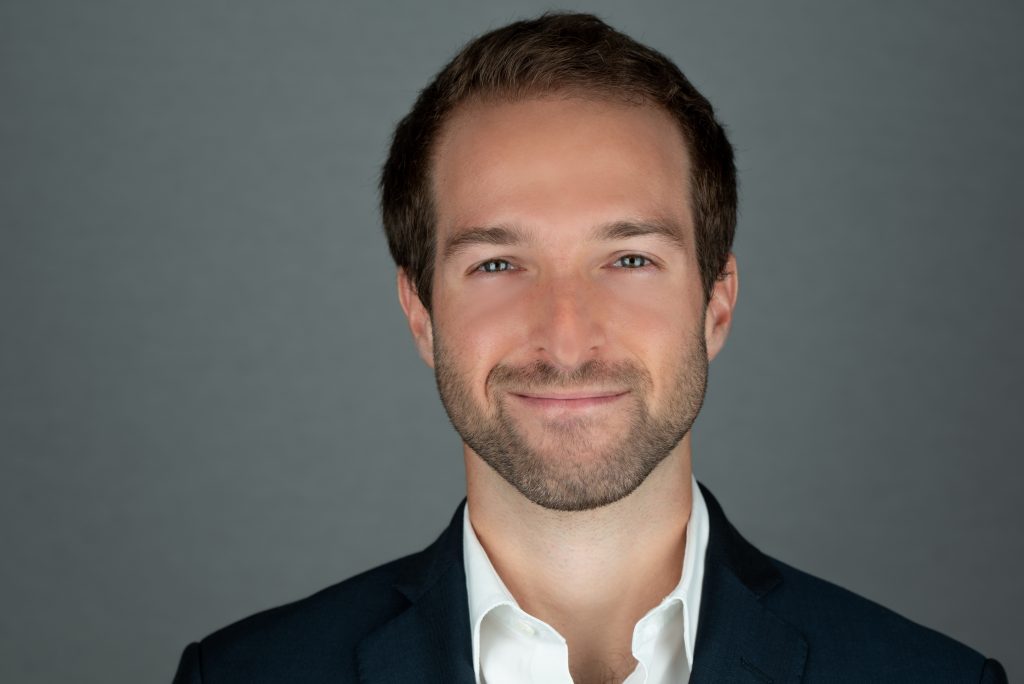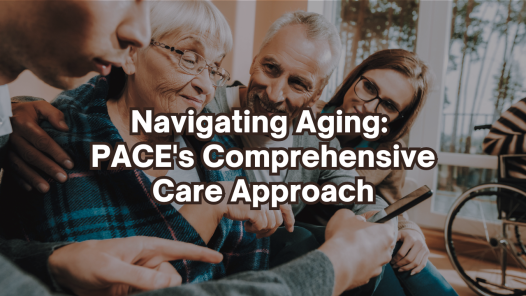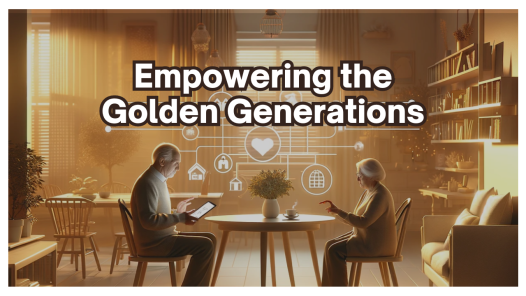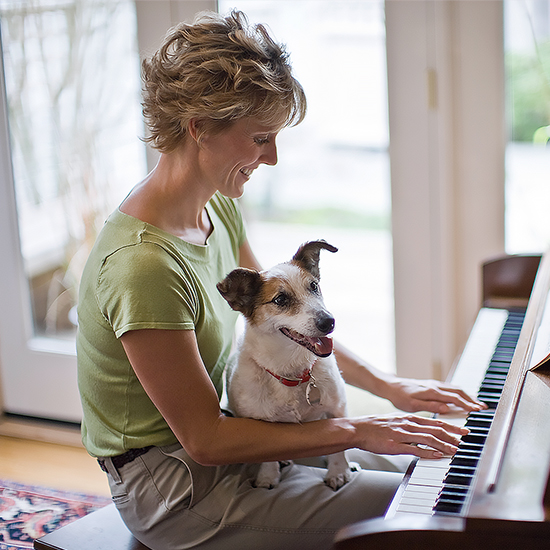
Jake Rothstein is the CEO and Founder of UpsideHoM, whose mission is to enhance the quality of life for older adults everywhere. UpsideHoM is the first and only fully managed, shared living option for older adults, providing a turn-key, affordable and appealing alternative to traditional senior living.
Jake previously co-founded Papa – a company which pairs older adults and families with “Papa Pals” for companionship and assistance with everyday tasks – based on experience with his own grandfather (who he called Papa). Witnessing the wide-spread nature of loneliness, isolation and unaffordable housing options for older adults, Jake developed the idea for UpsideHoM, which would provide a solution to more completely tackle these challenges at scale.
With a background in technology sales, operations and management, Jake has experience building and running successful, international teams, selling enterprise software into the Global 2000.
Jake holds a BA in Economics from the University of Florida. He is a FAA certificated Private Pilot who enjoys flying, outdoor running and spending time with his incredible wife Sharona and their Goldendoodle Louie.
Topics Discussed:
- Everyone ages differently – Why does senior living have to be a one-size fits all approach? Why not different?
- Why loneliness is different than social isolation – and how to tackle both?
- The looming housing affordability crisis
- Changing tastes/needs of today’s older adults
- Why aging in place sounds nice but isn’t always realistic for you or your family
Jake’s LinkedIn: https://www.linkedin.com/in/jakerothstein/
Transcription:
Hanh: 0:58
Today on the program, I welcome Jake Rothstein. He’s a founder and CEO of UpsideHM, a fully managed affordable, and a turnkey alternative to traditional senior living. So I’m eager to talk to Jake today about the future of senior living options and the importance of individualized aging in today’s society. Jake, thank you so much for being here at Boomer Living today.
Jake: 1:22
Thank you very much for having me. It’s great to be here.
Hanh: 1:24
Thank you. Could you share with us a little bit about yourself where you’re from your work experience and what are you working on right now?
Jake: 1:33
Sure. Yeah. So my name’s Jake Rothstein, born and raised in South Florida. What we’re now calling a Silver Valley as there’s this mass Exodus from Silicon Valley to, and from the New York tri-state area to sunny South Florida, which happens to be a beautiful place to live and work. And. Oh, an interesting area to start a business in the age tech space. My previous company that I co-founded called Papa is down here based in Miami and we’re here in Fort Lauderdale. And yeah, so have some experience in the senior services space. We’re now moving into senior living to more completely solve some of the major challenges like loneliness and housing affordability among the older demographic. And as, as 11,000 people a day, turn 65, the boomer generation and older adults today are looking for alternatives. And COVID has certainly shone a light on some of the challenges that with existing senior living. And we’re aiming to really tackle people that the 90% of people really, that, that tell us they want to age in place, but it’s not always practical for them to do so. We’re creating an alternative to that. We’re really excited about it. We’re growing really quickly. I’m excited to talk more about it.
Hanh: 2:39
Let’s get started by identifying, I guess, what is the issue with the current state of the senior living industry? Everyone ages differently, but a lot of the aging solutions seem one size fits all. What is the case for a solution that is customized to each individual?
Jake: 2:57
I think we’re seeing a big sort of Movement away, or move, at least in the exploration, away from traditional senior living. And it’s partially as a result of COVID, it’s certainly accelerated as a result of COVID. But what we’re seeing every day is that there’s a whole generation of people that might have put their own families into traditional senior living communities and found that there was a lot of inflexibility; because everyone ages differently, some people might not want two meals a day in their independent living community. Some people might not like bingo on Thursday nights in the lobby. And so what we’re seeing is this real desire, it’s a pent up desire of the boomer generation of the people that are 65 to 75 today looking for things that are different from what they put their parents in or what they help their parents transition into. And what we’re building around that is this completely flexible and customizable solution senior living solution that is an in-between from the time that a person might, move a child off to college to the time that they actually need true assistance or memory care. There’s a 20 or 30 year gap and it’s really not being addressed very well in the market today. I just want to be really clear about this, there’s always going to be a need for traditional assisted living and memory care. And we really believe that we are not providing a solution that is for people that need help with bathing and with medication administration and things like that. We’re building a real wellness based senior living platform, essentially that utilizes existing infrastructure in professionally managed and amenity rich apartment communities. And these apartment communities are inherently intergenerational, which we can get to in a minute, but why that’s important. And then we add this layer of services all delivered by third parties, but access through a single point, we call that person a home manager on our end. And that person essentially is a personal dedicated concierge for our residents that gets to know them that understands their likes and their dislikes and the things, the activities that they might like to participate in and the concert venues that they might like to go to, and we make them aware of those things and then we help them get to, and from those things, we also geographically cluster our units, our homes around community centers and community hubs, places like YMCAs and JCCs and other local community centers. So that we’re trying to duplicate a lot of the experience that a person might get in, say a, active adult 55 plus or an independent living community, but doing it outside the walls of a facility type of environment with more flexibility, more affordability, and a, this ability to customize the different services, because most of them are la carte. We offer a certain baseline included in the rent, but a lot of the services, most of the services we offer la carte services.
Hanh: 5:40
Okay. So in what ways are aging adults themselves different than the aging adults of the past?
Jake: 5:45
So in a number of ways, I’d say that the, there is a, certainly an increased ability in their use of technology. I think the technology adoption is much higher and it’s getting, it’s getting it’s increasing every day. And I think we saw that also with COVID the acceleration of adoption for things like Zoom and for even FaceTime. I recently taught my 87 year old grandmother how to use Zoom and that was an experience and she got it, which was, which was really exciting. so I think technology is going to be a big part of how people of today’s generation start to age, but their preferences are also changing. So people are living longer, and they’re living healthier. And so which means that their financial resources, the planning that they’ve done from a financial perspective, it has to change, because they didn’t anticipate living to 80, or 90 with a decent quality of life or what we hope to be a really great quality of life. They might’ve thought they were going to live till 75. And so maybe they retired at 55 or 60, and they’re realizing that they need to extend or prolong their financial wellbeing. And so we’re seeing that requirement or this necessity to prolonged financial wellbeing. We’re seeing this increased adoption of technology and the ability for technology to help with, activities of daily living. I think those are probably the two big ones. There is also this looming, I wouldn’t say, it’s looming. It’s where we were in the thick of it; housing affordability issue, right? Every big city is really pretty unaffordable to live in for working people. And so for people that are not working full time or in retirement, 2.0 phase of their life, this next chapter we aim to provide options, accessible price points for people, both at the high end of the spectrum, but also at the middle to low end of the spectrum, because there’s a need.
Hanh: 7:27
10,000 folks turning 65 plus for several decades to come. So it’s great, what you’re doing in, in serving the older adults and making huge impact for the aging population, congratulations. I think, the way a lot of outsiders looking into a senior living industry are also changing their perspective on it. So what do you think has precipitated this change? Do you think COVID has caused this change or has it only sped it up?
Jake: 7:58
I think COVID sped it up. I don’t think it’s caused it. I think that we’ve, for the last 30 or so years, maybe longer, society, certainly American society, has had this idea that we should, instead of having our parents live with us as they age like they do in many other cultures, we have found inexpensive land in the suburbs and we’ve built beautiful facilities that continually get increasingly beautiful and more expensive. And we’ve put our older adult population that is a little bit higher touch, they need a little bit more things or continue to need more things as they get older, in these communities that we have advertised as being really like golf country club type of communities. And so what it’s caused is this massive age segregation issue which we found first with Papa. Now we’re learning with UpsideHM as well. There are huge benefits to the old in society, and the youth in society co-mingling and being together. And so one of the things that we’re thinking about every day, we’re thinking about is this idea of bringing communities back, bringing intergenerational communities back. And so what we do is we utilize the existing infrastructure, right? So we’re working with existing multi-family apartment complexes and communities that have people like you or me, younger people living in them, but also have older adults living them. And so we facilitate engagement between the youth and the older adults. And we think that there’s a tremendous amount of positive outcomes, both from a health perspective and a mental health perspective and all these different reasons for getting those two generations back together. So I think this movement away from age segregation back towards age co-mingling, I think that’s going to be a very strong and lasting trend. And I think COVID has accelerated that, bringing communities back together, a concept.
Hanh: 9:47
Just as an example, my mom is in the later stage of dementia, and her memory is declining; however, there are just few memories of her that she would repeatedly talk almost every day is the fact that her children and grandchildren coming together, sitting in dining and just sharing those moments. So it’s always including multi-generational in conversation relating and food. So I think what you’re saying, it’s real, perhaps you experience in that too, and it just, to me that’s all of your relatives, all the people that you care surrounded with them and continuing to engage with them. They always want family, the people that matter to them the most, nearby.
Jake: 10:31
That’s exactly right. This whole concept came about from a personal need. My grandfather passed away. My 87 year old grandmother was left on her own. She had never paid a bill in her life. He did all of that stuff and she had never handled the maintenance for the house. And because he did all that stuff and, she found herself not only alone and lonely and detached from the community that she lived in, but she found herself burdened by the house, over her head, and that the maintenance required, by it. And she found herself having to now come out of her shell to make new friends, because she had my grandfather, her whole life, her whole married life; and that was a challenge for her. And so what we did as a family is we figured it out; we’re going to sell her house to extend her financial runway. We got her in a little apartment in the neighborhood that she knew and loved and was familiar with. And, I helped out when my other families couldn’t. It’s an important story because this is what we started this business based onl, and I was her first home manager and that fully managed apartment that she rented that our, that we rented for her, that was her, that was our first UpsideHM. And so a lot of the learnings that we, that you know, that we got to build, the foundations of this business came from, a personal need. And I can’t be the only one experiencing that in the country or in the world, the demographics in Australia and in Japan and in many other European countries are similar to what they are in the US. And so there’s millions and millions of people suffering and dealing with the same challenges for themselves and for their families. One of the things that we say is we can provide this extra set of eyeballs, this extra safety net on your aging parent or aging loved one, and that, you don’t have to be alone. So we have options for individual apartments, for people that want to live on their own, but in with a sense of community around them. But we also have shared units and more affordable, but a more social option, so you can pay per bedroom per month, and you have a roommate that’s matched based on compatibility. Yeah, we’re saying with that is we can build in companionship. Companionship is really important. Loneliness is an epidemic, right? Equivalent to smoking 15 cigarettes a day. We can help you not only build in companionship into your unit, into the roof over your head, but we’re going to bring the community that’s around you to you, and we’re going to bring you into the community and get you engaged and get, and keep you social and keep you, and these are the things that we’re learning. And I think you’re hearing this conversation in the industry pretty, it’s reverberating loudly now in the industry, that socialization is critically important to the wellness and the well-being of the older adult population and, for the non older adult population.
Hanh: 13:02
I know that converstation here is, it’s around the older adults, but I got to tell you it’s humanity. I need socialization, and so do you. It doesn’t matter what age, however, for perhaps for the older adults it has an everlasting impact or adverse impact. Humanity, we’re meant to be one-on-one to socialize, to engage, to have conversation, to hug and to thrive. You need all of that to thrive. So, now, what are today’s aging adults demanding in the senior living options that previous generations did not demand? In other words, what are the needs and preferences that are changing?
Jake: 13:39
Sure, it’s a great question. I think the number one thing that we hear is this idea of flexibility. I still like to cook. I don’t want to have to go down to the dining room for two meals a day. I still drive. I don’t need to use that bus that sits in the front of the facility every day to take me to the grocery store. And so like, we’re hearing all of these different use cases from a variety of different perspectives from the adult child that may be looking after a parent, or from the 65 or 67 year old with Type 2 diabetes that needs to manage their care, but doesn’t need full assistants. They’re not quite ready for assisted living. They’re not even really quite ready for an independent living community. They just need something in between to help them with things like grocery shopping and maybe rides at night to there, to visit their in-laws. What we did with Papa early on was be on the fringes of care. We want to be what you need right before you need home care. We’re doing with upside home to say, we’re going to be on the fringes of senior living to say you don’t need assistance or memory care yet, you need some basic help, some supported living. So yeah, we’re calling it resourceful living now because we’re giving you access to all of these resources that you may or may not know about that it exists right in your community, probably within a few miles of you, but you don’t know how to access them; and if you did, it might be challenging to access them. So just come to us and we’ll help you. And so things like housekeeping, things like check-in visits by my companion things like basic cable and internet, that’s all on one bill and it’s all set up for you. You don’t have to deal with any of that stuff. Who wants to be on the phone with the cable company? Nobody wants to do that, so we will do that for you. We’ll take that burden off you, we’ll take it off your family and just provide this completely turnkey, seamless, limiting experience. To second that point, this idea of aging in place, we’re finding is, I don’t know exactly the right terminology to use, but we like to call it more like aging in proximity, because it’s less important that a person lives or ages in the home that they’ve spent the last 30 years in, or the apartment that they’ve spent the last 30 years in and more important that they age in the community that they’ve spent the last 30 years in, where they have doctors that are nearby and they have friends that are nearby and they might have family members that are nearby. So we’re saying aging in place is a great in theory, but it’s not always very practical because maybe your house has stairs or maybe, maybe for whatever reason, you have, you don’t need as much house anymore. And it’s really becoming cost ineffective to maintain that. So we say, okay, why don’t you age in the same community, in the same neighborhood that you love and only love; but do it in a controlled fashion. And so that you have an extra set of eyes on you as you do it. And that’s really the approach that we’re taking.
Hanh: 16:17
So aging in place is a good option for some aging adults, but not for others. So basically, what you’re saying is, I guess, help me and the listeners understand how this decision can be made, and for whom it might not be the best choice?
Jake: 16:32
Sure, and I, everyone makes decisions differently, so it’s hard for me to say this is how you should go about this. But what I would encourage is that, explore the options that are available. We know the existing options living in a community like a NORC, “Naturally Occurring Retirement Community”, or a, a traditional senior living, or a CCRC. Those are great options for many people, but with 11,000 or 10,000 people a day turning 65, there is a whole variety of options that are unexplored. And so we’re trying to create a completely new segment within senior living to cater to those folks that can’t find the right fit for themselves. I hate to categorize one specific segment of the population. We’re seeing a lot of people on the younger side though, so people that are 57, 62 that are still well and still healthy and want to stay that way, but that also want that extra set of eyeballs, that extra safety net that “just in case.” God forbid I fall and break a hip and need to help with the recovery, or God forbid, something happens, and my daughter is in New Jersey and she can’t get here right away. I want to be able to know that I can call one person anytime for anything that I need and I don’t have to bother my kids about it. And so we’re seeing a really wide spectrum of people that are really finding this very interesting as an option both from a “Safety Net” perspective, but also from a “Cost and Affordability” perspective.
Hanh: 17:55
Okay. So, now, can you define individualized aging and why is it important?
Jake: 18:00
Yeah. So, we came up with this sort of term “Individualized Aging” as a result of seeing what sort of existed on the market, as of today, and it seemed that “Today” was a really one size fits all type of approach. Okay, you need independent living. This is the community, these, it’s all within these four walls, or this beautiful facility, and there’s a pool if you want it, and there’s a dining room for two meals a day, and the activities are planned for you, and this is what we offer. But if you want something else, okay, good luck. So what we said is, in the last 10 or 15 years, there’s been so much advancement on technology enabled services that can help you with everything from companionship and assistance to screwing in a light bulb to taking a trip or getting a ride. But there’s nobody that’s combining all of these things to help older adults do the things that they need to do. So why not take this idea of living in a community and breaking it up and deconstructing it almost and saying, okay, let’s create a more affordable option by segmenting the real estate from the services piece. You can rent an apartment in a normal inherently intergenerational community, and then you can add all of the services that you either want, or you don’t want. And so, this idea of individualization is the ability to customize services to your needs as you need them. Because if you don’t need rides today, because you still drive, you shouldn’t have to contribute to paying for that bus in front of the senior living community. But the day that you can’t drive any more, because you broke your foot, or because, what if for whatever reason you can’t, your glaucoma’s kicking in and you just can’t do it anymore until you have glaucoma surgery. Now we can get you. We can get you rides to wherever you want, and you can only, you only have to pay for it if, and when you need it.
Hanh: 19:43
Optionality as needed?
Jake: 19:45
Exactly.
Hanh: 19:46
So now how can it be possible to deliver an individualized aging approach for every resident while also doing it as scaled?
Jake: 19:56
Great question. So there’s two pieces to that. I think there’s this personalized approach because technology solves a variety of problems on efficiency and scale, but it never will solve the human to human interaction. What we learned early on in, in the other business was there’s, there’s a limitation to how far technology will take a human relationship, and there’s something very important about having that connection. And so what we said is let’s build great technology to help facilitate and coordinate all of these great services that are accessible to our residents, but let’s put a human in front of it, and let’s make that human, the person that develops a real relationship, a meaningful relationship with our residents, individually, understanding what their desires are. Understanding what their needs are. Understanding what their health worries are, so that we can be proactive using technology to help make, pointed recommendations on wellness activities, on diet recommendations on things like that, that what other, but otherwise not be possible. So I think that there’s this hybrid approach towards human engagement and technology intervention to create personalized relationships and personalized service delivery at scale.
Hanh: 21:07
Scaling obviously, is everything right? Whether it’s aging at home, senior living. Is there a limit to that? Can your product or services be applicable in a senior living community? Whether it’s a newly developed, an existing one, an older one? Can you give some insight on that?
Jake: 21:29
Yeah. One of the beautiful things about our model is that we can be incredibly flexible because we’re utilizing existing infrastructure. Now we can go through a real process to vet that infrastructure. So is the community in close proximity to a community center? Does it have good doctors nearby? Is it accessible to people that might be handicapped? Is it safe? Does it have Gates? Does it have security? Does it have maintenance onsite? So there’s all of these factors that we’re looking at to make sure that a community and a unit, complies with all of the strict quality standards that we’ve set. We can have these uniform standards across all of our homes, but there really is not a limit to the amount of growth that we can see because there’s so much existing inventory that that has been built, both on multifamily and in single family. We think that we can retool just a little bit, this inventory to help us scale as long as we’re doing a good job finding and vetting that inventory, we think there’s really no limit to that ability to scale. And the cool thing is that we don’t have to lay a single brick. We’re not tethered to big concrete trucks or construction crews. We can execute really quickly and nimbly as a result.
Hanh: 22:43
Great. So what do you see as the future of the senior living industry? How long do you think it will take for us to get there?
Jake: 22:51
That’s a really, those are two really good questions. So I think the future of the senior living industry is individualized. I think we keep coming back to this term, “Individualization”; I think “Customizable”, “Optionality.” I think these are big words that are, that carry a lot of weight. I think people, and technology will help help society do all of these things. People have certain needs and desires, and yours are different than mine, and mine are different than my neighbors, and and we’ve all aged differently. And so as a result, a “One Size Fits All” aging solution is not really a good solution for in the modern day because we have all of this technology that can help us build something better, and The future of senior living, in sort of one word, or less is “Individualization.” And when is it going to happen? I think we’re in the throws of it already. I think we’re beginning to taste what the future looks like and we’re beginning to see it. But it’s evolutionary. I think that, one of the things that we always close our eyes and dream about is this “What does this future look like?” And I think that it’s the future will look like what we make it, and we’re in the middle of that now. And so part of building something great is helping to “Will” it into existence. And so what we’re doing enough at home and what a lot of other providers that I talked to, or are really focused and thinking about, is how do we make that future now? Like, what does that future look like and how do we do it today?
Hanh: 24:08
Absolutely. And I also have to remind myself and anything that we’re doing for our parents and grandparents, we’re setting the stage, how we’re going to walk in that same journey, because we’re all heading the same direction.
Jake: 24:19
Exactly. I have that conversation a lot because you and I, and everyone is a potential customer. And so, I put, I always put myself in our resident’s shoes. If I wouldn’t want to live there, I can’t imagine anyone else wanting to. So we’re building something that, you and I would want to live in; that’s the reality of it.
Hanh: 24:36
What do you think has to happen from both the public sector and a private sector perspective for us? To get to where the senior living industry needs to be in 5, 10 years from now?
Jake: 24:47
Good question. So I think that there’s got to be a real tight working together with public and private sector. We’re seeing huge advancement in the Medicare Advantage landscape, as lots of dollars being thrown at social determinants of health and understanding this holistic approach to health and wellbeing and keeping people out of hospital, hospitals. And it’s going to be on the part though that’s great that the government money is available to help subsidize some of the costs of these really important social determinant services, but it’s going to be a private, sort of, push to execute on that. And yeah, I think the money can come from government. And, but I think that the execution has to come from business, and I think that there is going to be some really tight synergies between the two to really make great things happen. And I think great things will happen. We’re already seeing, we’re already seeing a lot of traction on that front, so yeah, I think it’s going to be a joint effort.
Hanh: 25:40
Absolutely. I think as a result of the pandemic, there are some positives that is, has uncovered, one of which is your service, but I think there’s going to be a lot of growth, it’s got to get better in 2021 in, in all aspects; caring for the older adult providers, technology private and public. So I think it’s a great time to be in this industry to make a huge impact. So as far as on a personal level, what do you think is your biggest strength that enables you to have a unique and impactful impact on older adults?
Jake: 26:12
I think identifying problems is something that I’ve always been, something I’ve always been good at solving, them, is more challenging than identifying them, but having dealt with this from from on a personal level, gives me that drive, gives me that motivation. And I wake up every day thinking about my grandmother and how I can help her and everyone like her, and so that really drives me. And I think that’s a strength that a lot of people may not have when you’re building a business that didn’t affect you personally, or that doesn’t have something that you can really relate to on a very personal level. I think that’s a challenge and it’s harder to sell and it’s harder to build and it’s harder to envision. And so having that, first of all, having that really good relationship with my grandparents led me to this, and I think that personal drive comes from that.
Hanh: 26:57
Thank you. Thank you for everything that you’re doing. And I look forward to your growth. So it sounds very exciting.
Jake: 27:03
Thank you so much. I do too.
Hanh: 27:04
Do you have any other thoughts that you would like to share?
Jake: 27:07
No, I’m honestly, I’m very excited. I’m really excited about the future. 2020 was a rough year for all of us. We know it. We get, we keep talking about it. I’m ready to stop talking about it, to be honest 2021 is going to be fantastic. It’s going to be a year of vaccinations and health, and increasing, increasing numbers on the positive note on everything. So I think that we’re in for a really good year. If we got through 2020, we can get through it, anything. It’s exposed a lot of, it’s exposed a lot of problems, but it’s also opened up a tremendous amount of opportunities, and that is exciting and we should all, I think, we should all be excited about it.
Hanh: 27:42
I do too. Personally, my focus is on lessons learned, growth and transformation. If you keep thinking in those terms, many positives would come out of 2021. I think everyone will have to overcome that hump and then start making corrections. And I believe part of that correction will include technology.
Jake: 28:03
A hundred percent, no question about it. Couldn’t agree more. This was great. Really a pleasure. Thank you so much for inviting me. I really appreciate it.
Hanh: 28:10
Thank you. All right. Take care.
Jake: 28:12
Okay. You too. Thank you again so much.











